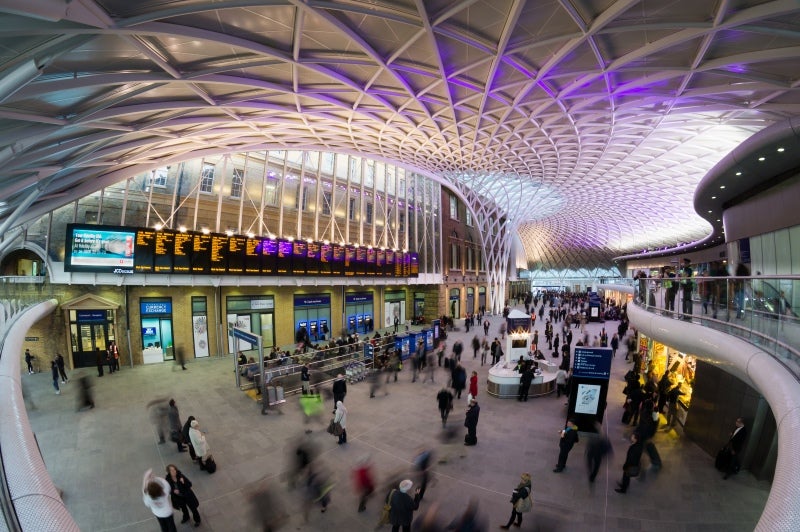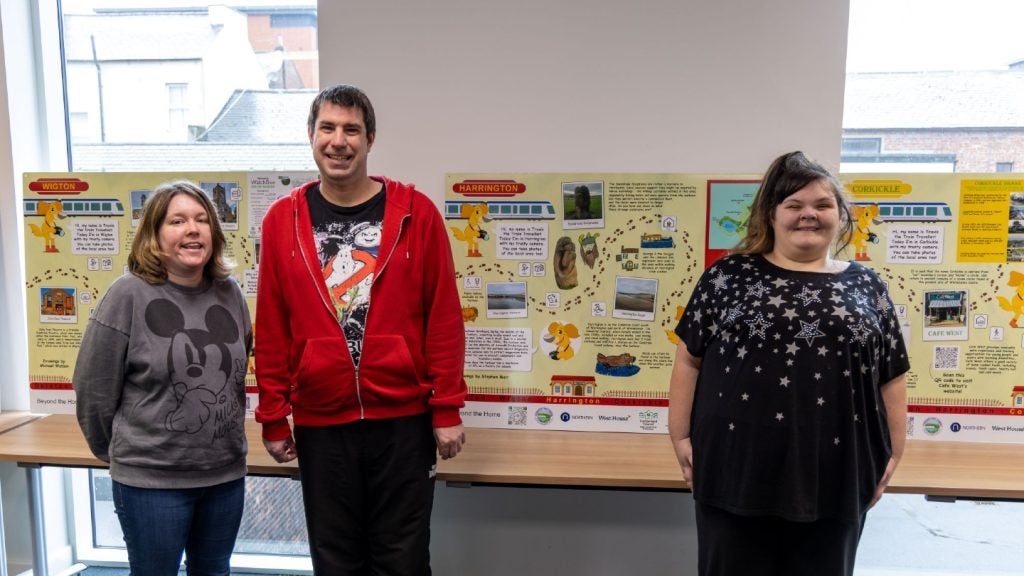
Trains are widely recognised as one of the most environmentally sustainable forms of mass transport, with significant savings over other transport modes in areas such as carbon emissions and energy usage. Rail infrastructure development is a key transport decarbonisation strategy in many countries, particularly in conjunction with widespread electrification campaigns to reduce emissions further wherever possible.
Rail travel’s wider benefits are clear, but at the platform edge it may be a different story. Large, enclosed stations in urban settings represent a risk in terms of local air quality, but with few studies exploring this topic in detail, the exact dynamics of air pollution in major stations have been unclear in the past.
In the UK, there has been previous research related to emissions at Birmingham New Street and London Paddington, but a study in 2019 delved into greater detail at Edinburgh Waverley station and London King’s Cross. The research, managed by the Rail Safety and Standards Board (RSSB) and carried out by researchers at King’s College London and the University of Edinburgh, aimed to get a more in-depth understanding of the concentrations of nitrogen dioxide (NO2) and particulate matter (PM2.5 and PM 10) in specific areas of the stations.
The study revealed the breadth of emission sources in large enclosed rail stations, which are driven primarily by diesel train movements but also influenced by factors such as food outlets and the background pollution from the surrounding city streets. The stations were within EU air quality limits in some cases but in clear breach in others; both Edinburgh and King’s Cross exceeded the annual EU NO2 limit within two weeks.
What are the factors that influence the concentration of harmful substances in enclosed stations, and what’s the best strategy to address them? King’s College London senior research fellow and leader of the Environmental Research Group’s Aerosol Science Team Dr David Green was one of the main researchers on the project at Edinburgh and King’s Cross. Here he discusses the report’s findings and the importance of understanding rail station air quality in fine detail.
Chris Lo: How much do we actually know about the air quality at rail stations around the UK?
Dr David Green: There have been a few studies in the past, notably [London] Paddington, but that was some time ago when there were still lots of diesel trains running there. There has been a more recent study at Birmingham New Street as well, which has problems due to the subterranean nature of some of the platforms.
How well do you really know your competitors?
Access the most comprehensive Company Profiles on the market, powered by GlobalData. Save hours of research. Gain competitive edge.

Thank you!
Your download email will arrive shortly
Not ready to buy yet? Download a free sample
We are confident about the unique quality of our Company Profiles. However, we want you to make the most beneficial decision for your business, so we offer a free sample that you can download by submitting the below form
By GlobalDataSo the work that my team and I undertook for RSSB was one of the most comprehensive assessments. We’re really trying to understand both the concentrations and the sources as well.
CL: How did you approach measuring emissions concentrations at Edinburgh Waverley and London King’s Cross?
DG: When we were trying to get an idea of the spatial representation of air quality around the station, we had to look for smaller devices. For nitrogen dioxide, we were using small diffusion tubes, which are quite accurate but they have a poor time resolution because you have to deploy them for four weeks. It’s very difficult to get an accurate, small sensor for nitrogen dioxide.
For particulate matter, there are smaller sensors available, and we used some of those, which are based on the optical properties of particles. These are small enough that we could put them up in four or five locations around the station. That can tell us a bit about the variability of concentrations.
We also had these measurements outside the stations, so we could understand how much more pollution there was inside the station relative to outside. We like to view this as an increment approach – the difference between what you measure outside and inside is what is coming from inside the station.
What we found at Edinburgh, if you compare it to King’s Cross – Edinburgh is a smaller city [than London], so the background concentrations were lower than they were at King’s Cross. However, there are more diesel trains and generally more train movements at Edinburgh station, so the station increment was higher. So we found fairly similar concentrations at Edinburgh and King’s Cross, but for slightly different reasons.
CL: Your study showed the complexity of the station environment and the variation of emissions concentration – does this complexity present a barrier to managing those emissions and minimising exposure to them?
DG: I think it’s really important to understand that complexity. If you don’t understand the sources that are contributing to the concentrations at the station, you can’t develop management or policy tools to reduce the concentrations. At Edinburgh, we found that food outlets contributed to some of the measurements we made.
Most of the measurements we made at other locations were related to the movements of diesel trains, so that was very clear. But some of it also seemed to be influenced by the local geometry of the station itself. The concourse at Edinburgh, in particular, was quite enclosed, and relatively close to a couple of the departure points for the trains. Whereas the concourse at King’s Cross was very separate from the departure point. There was a little bit of insight around if you were designing a new station layout, how you might want to do that to minimise the exposure of waiting passengers.
CL: Ultimately, could you give an idea of the health risk presented to passengers and staff at these stations, and how urgent this risk is?
DG: You could draw a parallel between standing on a platform edge to standing by a busy road. What you’re being exposed to is the background air plus the emissions from the diesel engine as a local source. So the risks are similar to standing by a road in the middle of a city. I’m loath to say there’s a health concern above and beyond what you’d exposed to in a normal city environment.
CL: Do you think there are common factors that will be driving emissions at virtually all stations of this type, and possibly common solutions to help address them?
DG: The emissions of small particles and nitrogen dioxide are primarily associated with diesel trains, although there are some other contributing factors such as food halls, the urban background, and if there’s any construction work or other vehicles. Edinburgh has changed a bit but they used to have a taxi rank actually within the station itself, and I think Euston still has some taxi access to one of the areas.
There’s the effect of train idling as well. It wasn’t something within the report that we had a great deal of detail on, but obviously the longer the engine is running within the station, the more it’s going to emit.
CL: Could ventilation and air flow be improved at stations to disperse emissions more effectively?
DG: In general, when we talk about reducing concentrations, we always like to focus on reducing emissions, because it’s much easier to reduce emissions at source than it is to reduce concentrations once they’re in the air. The same is true of many of the solutions that are talked about, like photocatalytic paint or green walls.
In enclosed locations, ventilation can help, but you often run into problems with building design. For instance, King’s Cross is certainly a grade I or II listed building, so major changes to the outside of that to put fans in would be very difficult. The same, I think, is true of Edinburgh, and you may run into problems with the surrounding hotels, some of which sit virtually on top of the station.
At Birmingham New Street there is quite an advanced ventilation system, which kicks in based on the CO2 or NO2 concentrations on the platform. So there are options, but they have to be dealt with in the remit of planning and regulation. So it’s not always straightforward.
CL: Do you think phasing out diesel trains is the key to improving air quality at enclosed rail stations?
DG: I think that’s a decision for the rail industry because there are accepted problems with electrifying large areas of the network. The relationship between [diesel trains and emissions] is clear, and diesel trains are being replaced at many stations. I don’t think, apart from the odd sleeper train, there are any diesel trains leaving from Paddington anymore. So there is certainly progress being made, but if you remove diesel trains from stations, then you would remove the dominant NO2 and PM sources. Looking at bi-mode systems that may run on the wires as they come into stations would be a solution to that.
CL: Do you think educating rail staff and the public about emissions concentrations could be a good way of limiting any potential health effects?
DG: Yeah, I think taking steps to reduce your personal exposure is a very easy, quick win. Outside of railway stations, we recommend people walk along back streets between locations rather than on the roadside. As you move away from the source, the concentration drops exponentially, certainly in the open air. So putting a distance between yourself and the source is generally a good idea to reduce exposure.







